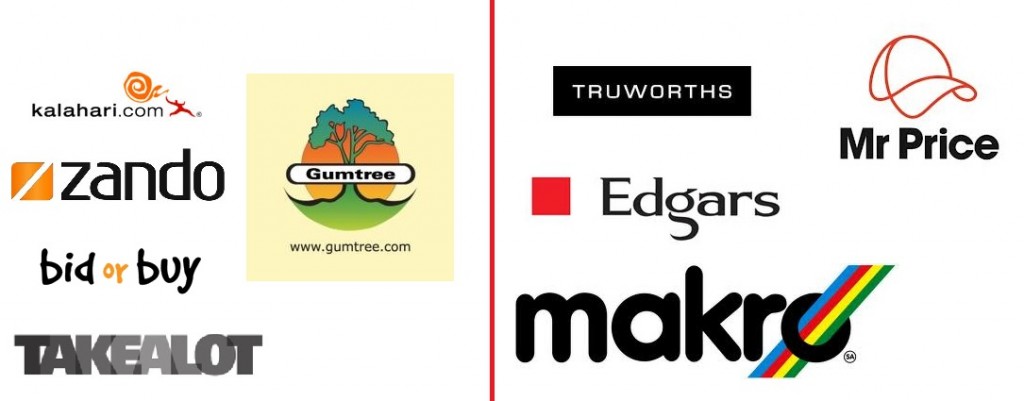Why Online Retail Brands Beat Their Real World Counterparts At Their Own Game [UPDATED]
Update 31st May 2013: Since our blog entry Edcon finally launched their Red Square online store, and we did have a quick chat with David Gibbons, who manages e-commerce at Edcon. We will see more online stores from the Edcon group in future as well as a nice break down of how Red Square will position itself against the current online “juggernauts”.
“Red Square is the ideal brand to differentiate vs the purely online stores. Cosmetics is an interesting product category, very tightly controlled by the international brands and their local agents – because of that, no-one in the online space can come close to offering the selection that Edcon does. Beyond selection, I think the free sampling program and the ability to buy on credit with your Edcon Thank U account are two other differentiators that set our cosmetics offering apart online.”
So there you have it. Some benefits that will make Red Square stand out, even though they came in a tad later. What do you think? comment below.
—————————————————————————————————————————————————————–
Kalahari, Takealot, Gumtree, Zando… All those brands mentioned have 1 thing in common; They have no brick and mortar stores locally, and strictly sell their items online (with some of them offering collections from their warehouses). So how did a couple of unknown brands become the biggest online retailers in South Africa, while your Edgars, Mr Price, Truworths, Makro lag behind in a R59bn industry (2% of SA’s economy)?
Online adoption is all about initial approach, and South Africa has always had the advantage of adopting what Americans and Europeans have already, and what works for them usually works for our market too. With this in mind, shouldn’t the bigger brands had foresight to see that a brand like eBay for example, surpasses Target or Walmart online, and used this to their advantage?
In South Africa less than 1% of all retail purchases are done online (as of January 2013), and yet Kalahari.com (SA’s biggest online retailer, owned by Naspers) saw a 40% increase of revenue for the 2012/2013 Fiscal Year, while by end of April 2013, of the traditional big retailers in South Africa, only Woolworths featured in the “Online Retail Brands Report – South Africa 2013”. Is the online market too small a field for traditional retailers to consider? Is it a market “small players” like NASPERS should deal with, while they control the foot-through-door customers? Big brands in South Africa have started to seemingly stagnate when it comes to new innovations and markets, it’s usually a case of playing catch up (yes Mr Price, Makro, Incredible Connections, we looking at you), and the JD Group for 2012/2013 seem to have targeted the online space with their roll-out of refreshed mobile and online facilities for Incredible Connection and Hi-Fi Corp, which is still playing catch up to Takealot and Kalahari. Edcon seem to be a very technophobic parent company, with their brands lacking ecommerce facilities (surprisingly LEGIT has over 40 000 Facebook Likes, and just over 5 000 Followers on Twitter), and yet for a brand aimed at a younger always online, always mobile demographic, they still fall short in capitalizing on all these numbers to convert into online purchases (and credit card only purchases shouldn’t be an excuse anymore).
We had a presentation with a very big retailer about 2 years ago (won’t mention names), on how to capitalize on their established offline market (took us nearly 4 months just to get a meeting mind you), and bringing that online through ecommerce and online marketing platforms, due to us having seen another small competitor of theirs grasp the space so quick, and having grown immensely in the space of 2 years. So we had a sit down, the marketing guys loved the idea and vision and agreed with us this is something they want to consider, basically create the foundation now, and solidify their market share online too. The decision went to the boardroom suits and the deal fell through as they felt it’s not “viable”. We did some consulting work for the client thereafter but as far as the vision and ideas we created, they were never used. In 2013, nearly 2 years since the meeting, their online presence is still the same, while that small competitor has become a well known brand as far as providing this specific product. They had 2 physical stores back in 2011, and now have 4 stores altogether, international distribution services, as well as mobile apps, newsletters and consistent online marketing.
So why have online brands beat their real world counterparts in retail purchases? That is a question retail decision makers (i.e. boards) will have to answer to their investors and the public. Just like right now I’m about to buy a bottle of cologne and a few items that will be delivered to me while I’m at work, Edgars Red Square or Truworths will have to give a very convincing argument on why online shoppers are neglected and shoppers like myself are lost potential sales. Perhaps that -1% market share is small change to the big boys, innovation indeed!
